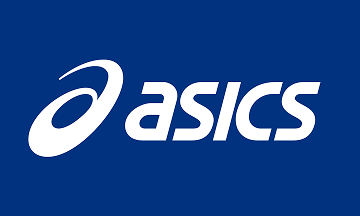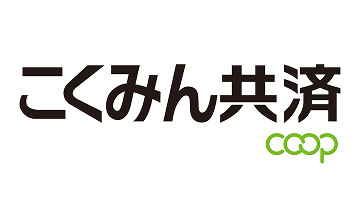Tokyo Marathon 2020 Wheelchair Elite Field has been announced.
For more details, please click here.
Tokyo Marathon 2020 - Preview of Elite Wheelchair Race
This year is a special year where the Olympic and Paralympic Games take place once in every four year, and as for Tokyo Marathon, it is the first AbbottWMM race kicking-off for 2020. Taking in consideration that the Paralympic marathon (Sep. 6) course will be overlapping partially with the Tokyo Marathon course, it is an opportunity for athletes to gain pre-race simulation, and I hope that everyone will enjoy the race as it will be a race like no other.
To add greater excitement, we have implemented 3 different schemes for this year. Since the course change from 2017, the Tokyo Marathon has become fast-pace race and has brought new course record for the elite runners. But that has not been the same for the wheelchair race and has not led to better record. Because the Tokyo Marathon course is flat for the most part, there are very little opportunity for the athletes to make a move. As a result, looking back in the past races, the athletes have the tendency to maintain in pack until the last 1km of the stone-paved road in Marunouchi Naka-Dori Ave., where it then become a sprint race in the last 200m. Perhaps the reason why we have not been able to produce fast race record is because game change happens only at the finish, lacking game shift throughout the course. And as the wheelchair race director, I would like to create a race that will lead to new records.
The first scheme we have planned is to shorten the distance of the AbbottWMM Wheelchair Bonus Point. In the previous AbbottWMM XII series Wheelchair Bonus Point, the distance was 1.3 km but we have shortened it to 400 m, where the fastest men and female athlete will earn 8 pts.

The second scheme is implementing "Beyond the Limit", our very own program to encourage all athletes to break the course record. The top 3 athletes who crosses the 37.5 km within the split mark time designed to lead athletes to break the course record will receive bonus prize (the current course records are 1:26:00 for men and 1:41:04 for women). The designated split time are sub 1:15:00 for men and sub 1:28:00 for women, but the time setting may be adjusted and reintroduced at the technical meeting (Feb. 29). Note, the 37.5 km is also the finish point for the Wheelchair Bonus Point, and combining the two schemes synergistically we can expect new course record.

The third scheme is raising the prize purse, almost doubling what we used to offer. The overall prize purse has increased, where the 1st prize purse has raised from 1,000,000 yen to 2,000,000 yen for both men and women equally. We truly hope the athletes will aim to achieve not only fast time record, but aggressively go for the prize money.

■ World's Top Wheelchair Athletes Line-up for the Race!
Along with the 3 schemes we have implemented, we have also focused to invite top athletes who has the speed. From abroad we have invited 6 men and 6 women, and from within Japan we have invited 3 men and 3 women. I would like to introduce our defending champion Marcel Hug (SUI), and he'll be joined by Daniel Romanchuk (USA) placing 2nd, Ernst VanDyk (RSA) placing 3rd and Josh Cassidy (CAN) finishing 5th last year. Johnboy Smith (GBR) and Jordi Madera (ESP) who are ranked in the top of AbbottWMM series will be entering for the first time or returning to complete the race. And I would like to also introduce Kota Hokinoue, Tomoki Suzuki and Ryota Yoshida who placed top three within the Japanese men last year and will be returning.
Looking at the recent records, I believe the race will be centered among Marcel, Daniel and Tomoki. Especially Daniel, we can expect him to come back in full speed, now that he has experienced the course and has the strength to finish in 2nd place despite the cold and rain. But our defending champion Marcel who has shown us all his superior strength even within the rough weather will surely not allow his title to be taken that easily. As for Tomoki, he has been conscious of these two, and definitely will make a move to keep up with them. We can look forward to great record that is led by these three men. Of course, experienced Ernst and Josh will definitely keep up, while Johnboy and Jordi with many international experiences will be joining, we can look forward to how they will race in Tokyo.
For the women's line up, we have our defending champion Manuela Schär (SUI), joined by Tatyana McFadden and Susannah Scaroni (both USA) placing 2nd and 3rd last year, along with Amanda McGrory (USA) and Madison De Rozario (AUS) who has several defending title within AbbottWMM and lastly Christie Dawes (AUS) entering for the first time, totaling to 6 world's best female athletes.
From Japan, we have 3 athletes lined up. Tsubasa Kina did not finish last year's Tokyo race due to weather, but in November she broke the Japanese record and carrying good momentum, and hope that she will keep up with the top athletes until the end. Kazumi Nakayama is class T53 with less mobility who focusses more on track events, but she continued to build endurance last year. Lastly, it is our past champion Wakako Tsuchida, who will be entering Tokyo for the first time since 2016. She has transitioned to triathlon in 2017, but will aim for marathon qualification for the Tokyo Paralympic Games along with triathlon this year, and we can expect her to come to the event fully prepared.
Since the 2018 Berlin Marathon, Manuela has been winning consecutively for the past 9 events of AbbottWMM and we can expect her to outstand the others again in Tokyo. But with other athletes striving to reach Manuela, faster record time can be expected naturally and most definitely, we hope our Japanese athletes will have a good battle along.
■ You cannot take your eyes off till the end!
It is hard to predict the outcome of the race with such strong athletes lined-up, but since the course change in 2017, the pack tends to stay together till the end, and make a move prior to finish. In wheelchair racing, long down/uphill or the cornering turn is where the athletes make a move, but like I mentioned in the beginning, the Tokyo Marathon course lacks the characteristic to allow the athletes to plot game change.
The only major hillside is located early in the course, the downhill little before 5km marking. The downhill naturally adds speed, and it will be interesting to see an athlete take-off from the pack, changing the race flow. And if the rest of the athletes follow not to lose their place, we can have greater expectation to see faster paced race with the hopes in witnessing new course record.
However, taking a lead among the strong athletes is not an easy thing to do, and observing other athletes and staying in pack is an outcome we can expect. But from perspective of an athlete, smaller pack is preferred, so one may shift the speed to shake off another competitor. Watch closely to see which athlete will take the lead, fall behind or plot for you can better understand and enjoy the race.
Also pay attention to a wheelchair marathon tactic called "rotation". To avoid the headwind, the athletes will race in single file, but if the lead athlete take the stress from the wind for prolonged time, it will drain physical energy and may lead to pace down. So, the athletes will take turn to lead the pack to maintain the pace. This is called rotation, and if you see this taking place, it indicates that the race is flowing in good pace. Despite, there are athletes who wishes not to take the lead, and the pack may spread side to side. By observing the movements and the position athletes deliberately take, you can better understand each game tactic.
For this year, AbbottWMM Wheelchair Bonus Point and other schemes to make our athletes focus on the record time is implemented within the course, and we hope our athletes will make the race more entertaining by boosting their speed.
===========
■ Outlook on Wheelchair Race
Last year was a tough race with the cold and rain, and many of the athletes did not finish the race. The athletes are constantly moving so can handle some cold, but due to the disability, adjusting the body temperature may be physically difficult for some.
Marathon event being staged outside, the weather change cannot be helped, but what is troubling for the wheelchair athletes is if it rains just before the start. The athletes will push the wheelchair by pushing the hand rim, which is generally made out of rubber, using a rubber glove that creates friction to better catch the rim. However, if it rains, the rubber will become slippery, and therefore, the athletes will need to prepare their gear to better cope with the rain. For example, athletes will apply wax or pine resin, or change the material of the gloves to cloth or buckskin. Recent days, the athletes choose to use hand rim made out of carbon material, or apply slip resistant.
If the weather is predetermined to be rain, the pre-race preparation will be made for such weather, but it is very difficult to prepare for indecisive weather. The friction created between the two rubber is most ideal to push but it will serve no purpose in rain, and vice versa, using a slip resistant gear on the clear weather will slow the athlete down. Making a careful decision in choosing the appropriate gear is very important.
Other than the weather, the complication that can happen in race is flat tire. The front tire requires to be detached in order to change the tire, and therefore, the decision needs to be made to continue on the race with flat tire or drop-out from the race. As for the back tire, athletes normally have spare with them. The tires are glued, so in case of puncture, the athletes can strip the tire off and fix the new one and inflate using the CO2 inflator.
Trouble is less expected in Tokyo for the road surface is very clean, but I have experienced flat tire myself in races overseas. If quick, the tire can be replaced within 40 to 50 seconds, but if I scramble it will take 2 minutes, hindering my race. Choosing a tough tire to avoid puncture is ideal, but the added weight from the thickness is also something to consider.
As you can see, the battle of the race begins even before the start. Please support and root out loudly for the athletes along the course, for you now better understand the effort the athletes dedicate for the race, and witness the Tokyo Marathon 2020 as it may be a pre-race for some entering the Tokyo Paralympic Games.
===========
Tokyo Marathon Wheelchair Race Director
Masuzumi Soejima































